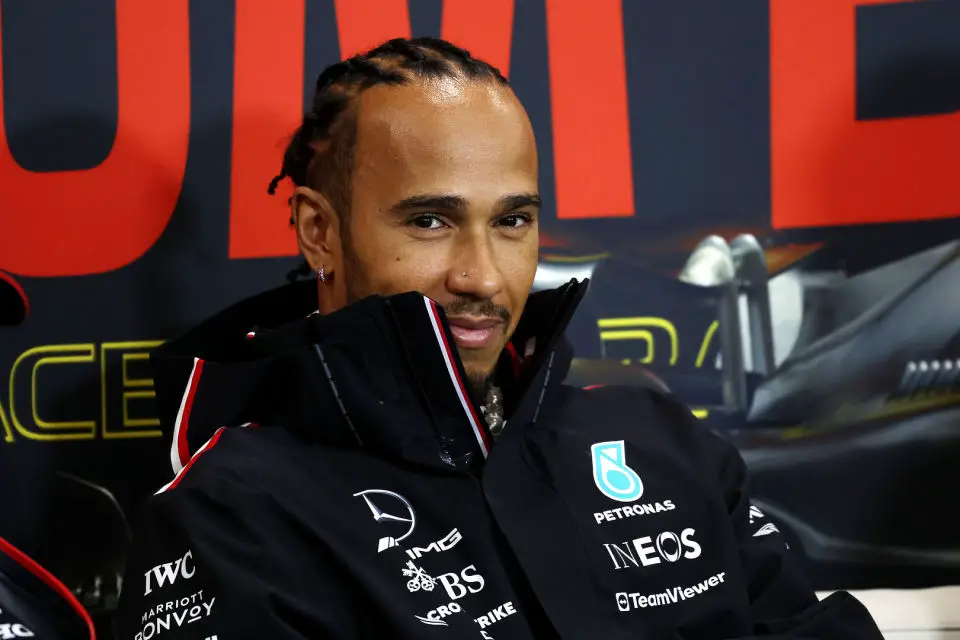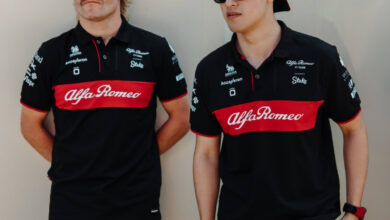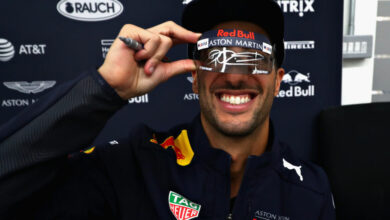George Russell Questions Las Vegas GP Circuit’s Racing Quality: An In-Depth Analysis
George Russell recently raised doubts about the Las Vegas Grand Prix circuit’s ability to support exciting racing, focusing on its simple design and the limited role of Drag Reduction Systems. This skepticism comes despite the circuit featuring long straights traditionally conducive to overtaking.
Key Takeaways:
- The Las Vegas Strip Circuit is seen as too simplistic by many drivers, including George Russell, potentially undermining the thrilling racing experience expected by fans.
- Russell’s main concern revolves around the circuit’s low downforce configurations and the ineffectiveness of Drag Reduction Systems (DRS) in facilitating overtaking, contrasting sharply with other circuits like Barcelona.
- The new circuit is compared unfavorably to iconic tracks such as Silverstone, Suzuka, and Monaco, while Lewis Hamilton draws hopeful parallels with the dynamic Baku City Circuit.

In a sport that constantly evolves and seeks to expand its global appeal, Formula 1’s introduction of the Las Vegas Grand Prix circuit has been met with mixed reactions. George Russell, a prominent figure in the F1 community, recently articulated his apprehensions about the circuit’s potential for close racing. Despite its long straights, which are typically favorable for overtaking, Russell remains unconvinced about the track’s ability to deliver a riveting race.
Russell states, “For the 20 drivers it’s not going to be the most enjoyable circuit we’ve driven in the whole season. But this is a sport that millions and millions of people tune in every single week to watch and probably the majority of people understands what a great race is and overtaking and battles. But only probably the diehard fans can really appreciate the greatness of a circuit like Silverstone or Suzuka or Monaco. So times are definitely changing and I think we just have to embrace it, really. It’s definitely not going to be an iconic circuit in terms of its layout. I think it’s been designed to try to enhance racing. [But] I’m not too sure how good the race is going to be. Of course there’s big, long straights, but because we’re all on minimum downforce the slipstream effect won’t be that great. The DRS I think is worth about one tenth per straight. When you compare that to someone like Barcelona, it’s worth six tenths on the straight. So it may not actually be as straightforward as one may think to race.”
In contrast, Lewis Hamilton offers a more optimistic view. His comments suggest that while the Las Vegas circuit might not inherently promise the high-octane excitement of traditional tracks, it could still surprise fans with unpredictable and thrilling races, much like the Baku City Circuit. Hamilton expresses, “From a racer’s perspective, you want to have the best show. If the race track provides races like, for example, Baku – which is in terms of racing is one of the best races, lots of overtaking – that would be amazing. Rather than just one car disappearing and cars [are] not overtaking, for example.”
The differing opinions of Russell and Hamilton exemplify the ongoing debate within F1 circles: how to balance modernizing the sport while preserving its rich heritage of intricate and challenging circuits. The Las Vegas Grand Prix, with its simplistic design yet potential for high-speed drama, sits at the heart of this debate. Whether it will live up to its promise of enhancing the racing spectacle or fall short of the high standards set by legendary tracks remains a topic of intense speculation and anticipation within the F1 community.




